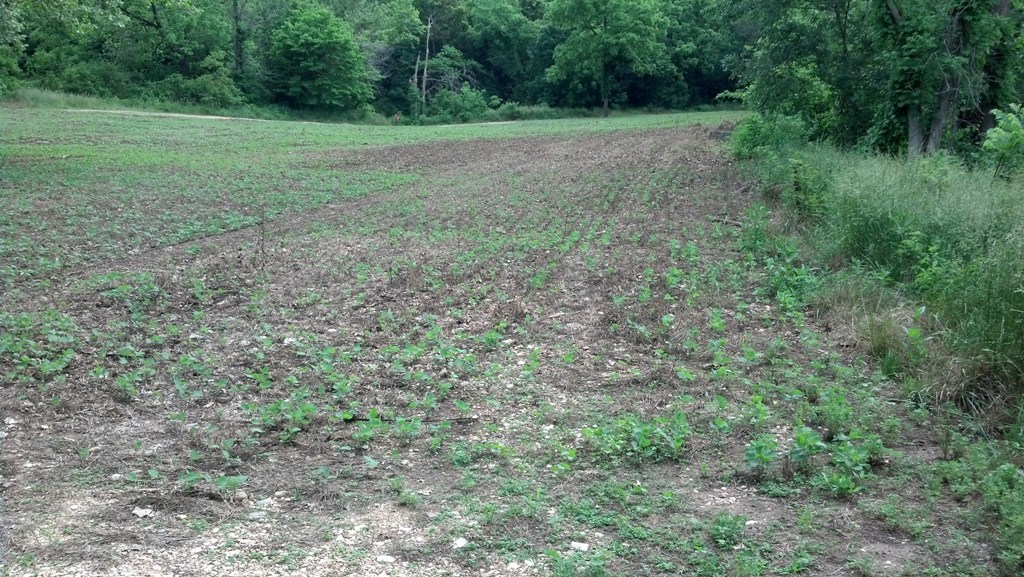Food Plot Damage By Groundhogs
Filed under: Food Plots, Hunting Blog, Trapping
I’ve noticed a trend during recent years of an increasing number of reports of groundhogs damaging food plots. Groundhogs, called woodchucks in some areas, are rodents and strict vegetarians. They love to eat and prosper on soybeans, peas, and clover – all common warm season food plot crops.
Groundhogs breed during the early spring and usually have 2 to 6 offspring with 4 being the most common. It’s easy to see how groundhog sightings can go from rare and novel to common in a few years. Similarly, damage to food plot crops can go rapidly from non-existent to extensive.
A few years ago groundhog sign and sightings were rare at my place. Now there’s evidence of groundhogs at every one of my food plots. Some of my food plots show sign of extensive damage. Groundhogs tend to begin eating soybeans and other annual forages as soon as they germinate and literally kill the plants by eating them to the ground. Their damage is fairly obvious as it is almost always in a semi circular pattern from the edge of the field where their dens usually are.
I like groundhogs, but I don’t like them destroying food plot crops and depriving other forms of wildlife from access to quality forage. Therefore it’s necessary to attempt to reduce the population to a level where the damage they cause is acceptable.
Groundhogs have a good sense of smell and vision. They are very challenging to hunt and make tasty table fair! Small calibers like a .223 are perfect for groundhogs, especially when paired with rapidly expanding ammo like Winchester Varmint X!
Trapping is a better solution where groundhogs are a serious problem. I use the same Duke cage traps I use for catching raccoons during the winter. Almost any type of fresh fruit works well as bait. I prefer cantaloupe as it has a very strong aroma that will last for a few days, even during the heat of the summer. The best success occurs when the trap can be placed within a few feet of the groundhog’s den or directly in the trails that lead from their den to where they feed.
In good habitat (like by a lush food plot) groundhogs often have very small home ranges of 200’ or less. Groundhogs tend to be territorial and it’s common to have multiple groundhogs staking out territories on opposites sides of food plots. In these situations, groundhogs will certainly take more than their share of forage and do extensive damage to the food plot crop. As part of this damage, they limit the amount of quality forage available to other species including deer, turkey, and other foraging wildlife.
Hunting groundhogs is a great way to tune up your whitetail skills with either a gun or bow and provide some good fresh meat before deer season! However, if groundhogs are doing substantial damage to food plot crops, trapping them is the best solution.
Growing Deer (and managing food plots) together,
Grant




